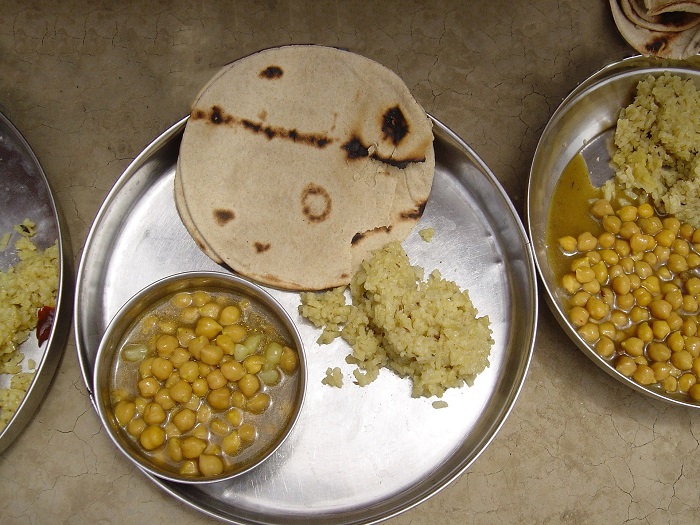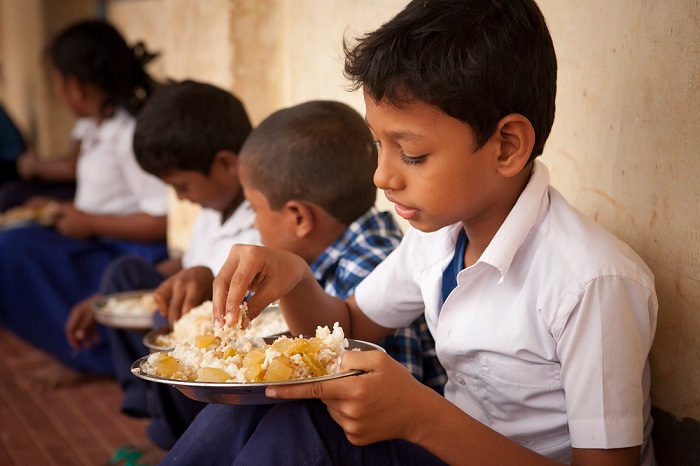
Definition
According to the FAO of the UN, food security is a situation in which all people at all times have enough food to meet their dietary and nutritional needs in order to live a healthy and productive life. Food security also includes nutritional security.
Ensuring food security is the basic goal of social justice, apart from the development of adequate human resources.
Food security and the Constitution of India
There is no explicit provision on the right to food. However, the fundamental right to life contained in Article 21 of the Constitution has been interpreted by the Supreme Court and NHRC to include the right to food.
Under Article 47, it is provided that the State shall raise the level of nutrition and the standard of living of its people and the improvement of public health as among its primary duties.
Dimensions of food security
Food security is a multi-dimensional concept that extends beyond food production, availability, and demand.
Food availability
This is seen as a function of production. Fortunately, thanks to the Green Revolution, today we have enough food in the market and in government warehouses. This is a major achievement by Indian farmers who changed the status of “ship-to-mouth” into a commitment to “right to food”.
Access to food
It is a function of purchasing power. The government has assured food through the National Food Security Act (NFSA) and the PDS.
Absorption of food in the body or its utilization
It is significantly dependent on sanitation, drinking water, and other non-food factors, including public health services. Ensuring that these facilities are functional depends on the capability of local panchayats and their coordination with other local bodies.
Challenge in addressing food insecurity
Ghost beneficiaries
BPL cards are of conclusive proof of being beneficiaries, but not of being poor.
Nutrition
The focus on nutrition, in general, is missing. Particularly, monitoring and timely evaluation dimensions are not focussed.
Food distribution
The food distribution system is faulty. Hoarding, black marketing, corruption are the main reasons for faulty food distribution.
Limited purchasing power
Unemployment, underemployment limit the purchasing power of the common man.

Government steps for food security
The Union government runs three major food-based safety-net programs that help millions of households access food, cash, and other support.
TPDS
TPDS has a long history. It has an annual budget of Rs 18.9 lakh crore and it distributes 58 million tons of wheat and rice at a heavily subsidized price. It serves two purposes: it purchases surplus from farmers and distributes it to the needy.
Mid-day meal scheme
MDMS provides daily nutritious cooked meals to more than 120 million children between classes 1 and 8 in all government and government-aided schools. The government has set a budget of 2.54 million tonnes of rice for food and Rs 160 crore for wheat every year. The program is expected to help reduce school hunger as well as improve school enrollment, retention, and attention.
Integrated Child Development Services
ICDS provides cooked food and take-home rations to 100 million children under 6 years of age and pregnant and lactating mothers. It further seeks to improve the nutritional intake and health of children aged 0–6 years of age. It is laying the basis for proper psychological, physical, and social development and decreases the incidence of diseases.
NGOs working for food security
World over, many non-profit organizations and foundations are trying to combat hunger. In India, Akshay Patra, Feeding India, Skip meal are doing a remarkable job in a fight against hunger.
Way forward
Supporting agriculture and allied sectors
It is important to closely look at the emerging concerns in the availability of agricultural inputs such as labor, agricultural inputs, machinery, and finance so that the agricultural system can run smoothly and ensure long-term food security.
Improving purchasing power
Creating employment opportunities, timely delivery of social security benefits can improve the purchasing power of the common man. Also, the implementation of universal basic income can be game-changer in pandemic times.
Access to food
It should be further strengthened and the food basket should be widened including millet, lentils, and oil. Steps should also be taken to avoid hidden hunger due to a lack of micronutrients in the diet.
Beneficiary identification
‘Exclusion method’ i.e. excluding certain categories as beneficiaries is the best method, rather than identifying target beneficiaries. The broad criteria for exclusion should be spelled by the Union government to maintain uniformity across the country.
Expansion of coverage of social safety nets
A large number of vulnerable people are currently out of food-based social safety-nets. Steps need to be taken to include them in food safety nets. ‘One Nation, One Card’ across the country is a great move in this direction.
Diversification of the food basket
There is a need to expand the food basket to ensure that all major nutritional requirements are met. Strategies such as Nutri-Garden / Kitchen Garden, Micronutrient Supplementation, and Fortification as well as Direct Cash Distribution can promote better nutritional outcomes.
Role of community
The community can play an important role. Timely evaluation of nutritional programs and updating programs accordingly can be done through social auditing.
Engaging NGOs
With the movement of migrant laborers, loss of wages, and livelihood at various places, there is a possible emergence of new hotspots with respect to food and nutrition security. The continued participation of NGOs will help fill blind spots and complement government efforts.
You can also read-
COUNTRY OF ORIGINCUSTODIAL TORTURE & DEATHSSuper Cyclone Amphan
